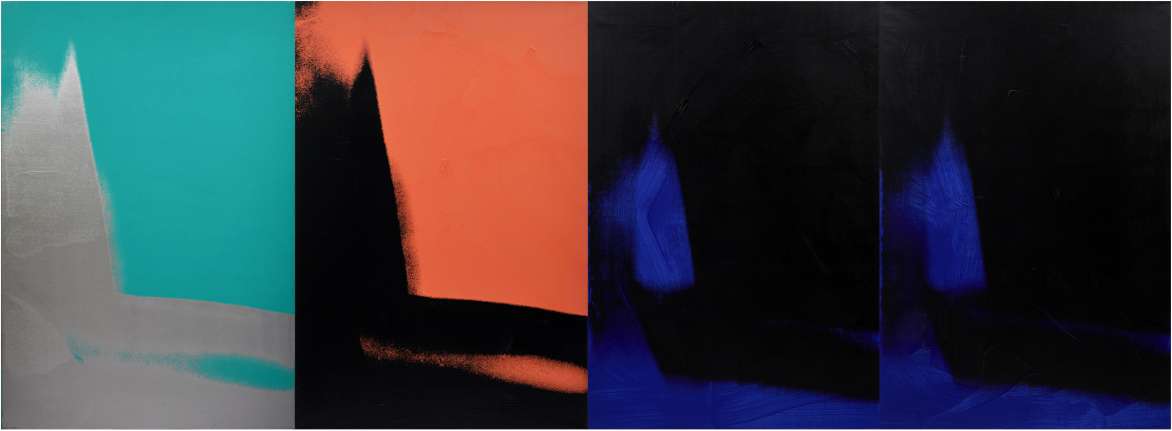The Andy Warhol Catalogue Raisonné is announcing a call for works. Owners of paintings, sculptures, and drawings are encouraged to contact the Catalogue Raisonné at catalogue@warholfoundation.org or visit the website to complete and return an owner questionnaire. Your ownership information is confidential. Please note that completing the form on the Foundation’s website does not guarantee that the work will be included in the Catalogue Raisonné.
Volume 6 of the Andy Warhol Catalogue Raisonné: Paintings and Sculptures, 1978-1980 is now in preparation. It is the fourth and final volume dedicated to Warhol’s work of the 1970s. It documents the more than 725 paintings and sculptures that Warhol produced between 1978-1980.
“The sheer visual evidence of Warhol’s paintings during the 1970s overwhelmingly rebuts the myth that after the 1960s, he was an artist in decline,” says Neil Printz, editor of the Catalogue Raisonné. “The epic succession of series from Mao (1972) to the Shadows and Reversals (1978-1980), not to mention his portrait paintings, reveal an artist at the height of his powers, a trajectory that continued unbroken until Warhol’s death.”
Volume 6 features Warhol’s Shadows, a two-and-a-half-year project of nearly 275 paintings. Chapter 1 documents its first phase, including the paintings commissioned and exhibited in early 1979 at the Lone Star Foundation (Dia Art Foundation). This chapter will reproduce and catalogue each of the 102 canvases within this seminal cycle as well as documenting the entire ensemble as a single painting, recording every exhibition and iteration of the cycle since 1979.
Chapter 8 focuses on the project’s second phase, the Diamond Dust Shadows of 1979–1980, made by scattering ground glass over the inked impression of the shadow. Printz continues, “In many ways, the Shadow paintings offer the key to Warhol’s artistic concerns at the end of the 1970s—his radical rethinking of the photographic basis of his art through reversal and abstraction, and his fascination with painting as an immersive field.”
In Warhol’s Retrospective and Reversal series, the subject of Chapter 4, images from his past work are reimagined in montaged compositions in the Retrospectives and as negative images in the Reversal series. Six mural-sized canvases among them reinvoke the panoramic coordinates of the Dia Shadows.
Warhol envisioned being able to see all of his portraits together in “one big painting called ‘Portrait of Society.’” Chapters 2 and 5 document his portrait practice during 1978 and 1979. Working with his Polaroid Big Shot camera, he photographed nearly 50 sitters, including Thomas Ammann, Truman Capote, and Liza Minnelli, and painted nearly 200 portrait canvases.
Chapter 3 examines Warhol’s fascination with Studio 54 and his first series of gift paintings. Chapter 6 looks at his paintings of Human Hearts produced in tandem with an unrealized mural commission, and at a group of small, stenciled hearts distributed as gifts. Chapter 7 introduces Warhol’s use of diamond dust in his Gem paintings, and his experimentation with a silkscreen ink that fluoresces under ultraviolet light.
Forthcoming from the Catalogue Raisonné are four additional volumes documenting Warhol’s paintings and sculptures of the 1980s, and a planned series of volumes dedicated to Warhol’s drawings from the late 1940s to 1987.
The Andy Warhol Catalogue Raisonné is a scholarly project sponsored by the Andy Warhol Foundation for the Visual Arts to record the complete corpus of paintings, sculptures, and drawings that Warhol produced during four enormously productive and intensely inventive decades. The project was initiated in 1977 by the Swiss art dealer Thomas Ammann. In 1993, the Andy Warhol Foundation partnered with Thomas Ammann Fine Art to sponsor the project; in 2004, the Foundation assumed complete stewardship of the project.
For more than 25 years, the editors of the Catalogue Raisonné and a team of trained researchers have scoured the secondary literature, examined thousands of works of art, reviewed the artist’s archives and photographs, and interviewed assistants, colleagues, portrait sitters, and friends to elucidate Warhol’s materials, techniques, and artistic process. As the most comprehensive chronicle of Warhol’s painting career to date, and the first systematic study of his studio practices, the Andy Warhol Catalogue Raisonné is an indispensable resource for scholars, curators, collectors, and critics, as well as for students and ardent fans of his work.
